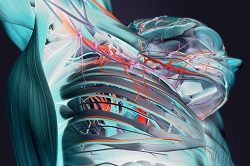Ice-binding proteins offer innovative solution for preserving body organs for transplant
The EU-funded CRYOPRESERVATION project has been investigating how to freeze human organs and successfully thaw them in a way that ensures they are still suitable for transplant. One of the main problems of storing an organ for more than a few hours is ice growth – when organs are frozen, expanding ice crystals damage the cells in such a way that they are unable to be revived. Tight timeframes for transplant This is why an organ intended for transplant, such as a heart, liver, lung or intenstine, is currently kept cool but not frozen, resulting in a lifespan of no more than a few hours. A heart or lung is only viable for transplantation for six hours before deterioration begins. A pancreas and a liver would be wasted after 12 hours, whilst a kidney must be transplanted within 30 hours. With such short timeframes and the logistical challenges of transplanting donated organs, many do indeed go to waste. The CRYOPRESERVATION project has thus been focussing on finding a way to successfully freeze organs that would allow for their long-term banking and a more efficient system of organ allocation to compatible patients. The key to this process is to use antifreeze proteins, a type of ice-binding proteins that help organisms to resist or withstand freezing, both on land and at sea. Ice-binding proteins Ice-binding proteins were discovered approximately 50 years ago in Antarctic fish and are found in cold-resistant fish, plants, insects, and microorganisms. They actively inhibit the formation and growth of crystalline ice. Additionally, their superiority over other antifreeze substances is that they are needed in very low amounts to do this effectively. To facilitate their research, and often working at sub-zero temperatures, the project team developed a specialised microscope equipped with a stage cooler that allows a millidegree-level control of temperature. Using fluorescent illumination, the team were able to see where the proteins, which were tagged with fluorescent dyes, are located. With these specialised tools, they were able to follow the ice crystals as they grow and melt in the presence of ice-binding proteins. The project’s research has shown that ice-binding crystals absorb ice via irreversible binding. It was discovered that proteins in insects are much more efficient in inhibiting ice growth than proteins in fish, but that fish proteins bind themselves faster to ice. These findings, the project believes, could be crucial when developing a cryo-preservation technique for donated organs. Other possible uses However, the possible uses of these proteins are not only confined to organ storage. The project’s principal researcher, Prof. Ido Braslavsky of The Hebrew University of Jerusalem, has also pointed out that cryo-preservation based on antifreeze proteins could also revolutionise food storage. Indeed, some food manufacturers have already started to use ice-binding proteins in their products to both develop new frozen sweet treats, but also to guarantee that thawed food is just as fresh as when it was bought at the supermarket. The CRYOPRESERVATION project, due to end in October 2016, is supported by the European Research Council (ERC) and Seventh Framework Programme and received EUR 1, 500, 000 in EU funding. For more information please see: CRYOPRESERVATION CORDIS project page
Countries
Israel



